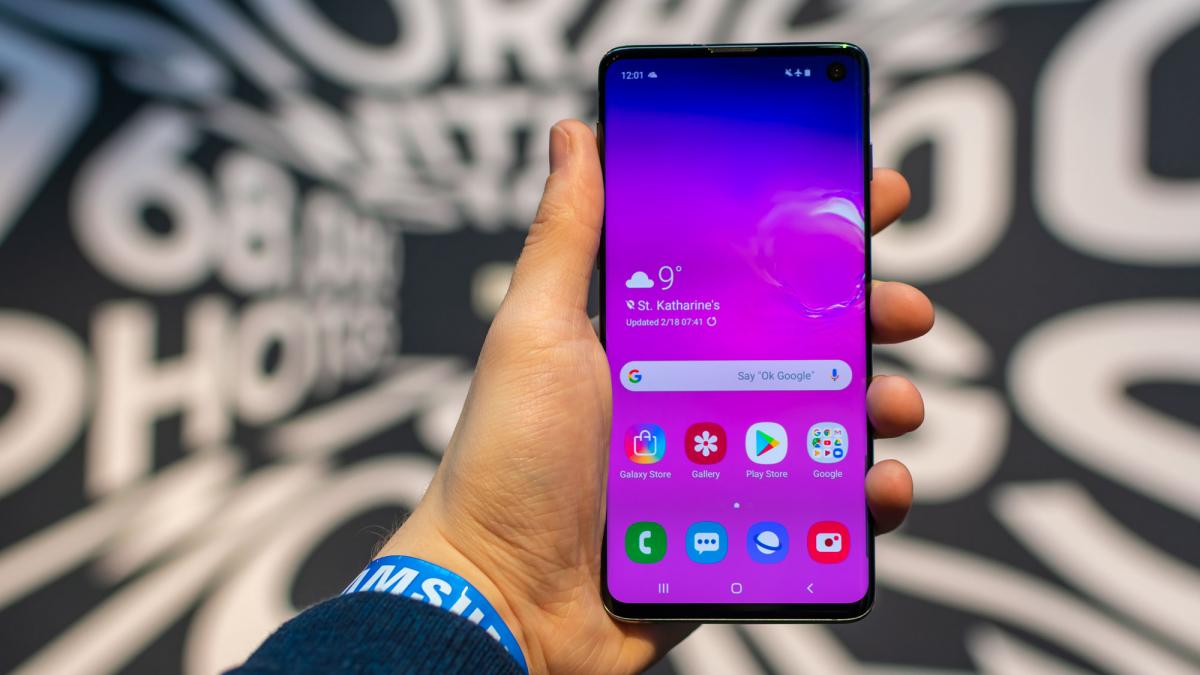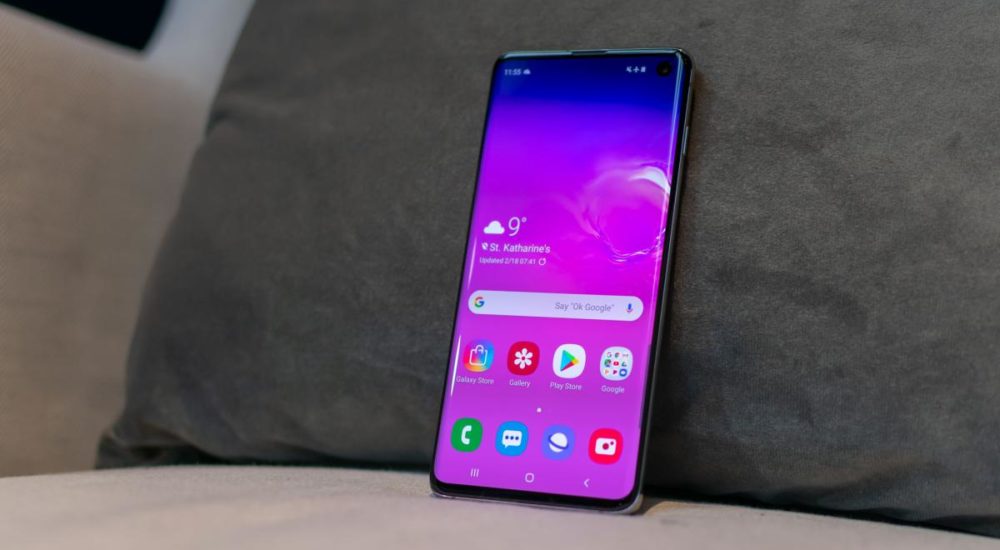The Galaxy S10 isn’t foldable, but Samsung’s latest flagship remains a worthy iPhone Xs killer
It might be uncharitable to say it, but I’m actually glad the Galaxy S10 isn’t foldable. Despite so-called industry analysts suggesting otherwise, and rumours hinting at a bendy phone tentatively rearing its head before MWC kicks off, this year’s Galaxy S10 flagship isn’t waving the flag for flexible phones as we initially expected.
Samsung certainly isn’t squeezing the trigger just yet with its flagship S-series phones, and I think that’s a good thing. Flexible screen technology has barely entered its formative years after all, and as we’ve seen from devices such as the Royole FlexPai, the outcome can actually be rather disappointing.
Even without this, the Galaxy S10 is still every bit as impressive as we could have hoped for. It doesn’t need to rely on bendy screen gimmicks to try and push its way out from under the crowd.
Samsung Galaxy S10 review: Key specifications, price and release date
- 6.1in, 19:9, Quad HD+, Dynamic AMOLED screen
- Octa-core 8nm processor
- 8GB RAM
- 128GB or 512GB storage (512GB microSD expansion)
- Triple rear camera: 16MP (f/2.2), 12MP (f/1.5, f/2.4), 12MP (f/2.4)
- Selfie camera: 10MP (f/1.9)
- 3,400mAh battery
- Ultrasonic fingerprint reader
- IP68-rated waterproofing
- 150 x 70 x 8mm
- 157g
- UK release date: Preorder 20 February, available from 8 March
- UK price: £799, £999
Samsung Galaxy S10 review: Design, key features and first impressions
If you’re not already foaming at the mouth at the starting price, you might be interested to discover that the Galaxy S10 represents the next era of Samsung smartphones. This is the first Samsung phone with an in-screen fingerprint reader, the first with a triple camera arrangement, and the first with an HDR10+ screen.

The Galaxy S10’s revamped design is perhaps its most noticeable change. You won’t struggle to tell this phone apart from its predecessor this time around: the Galaxy S10’s chassis is now surrounded by an iPhone Xs-like silver-tinted trim. It looks just as swish, in fact, and even the chin and forehead bezels have been completely removed.
In doing so, rather than following the notch trend on the front of the phone, Samsung has instead opted for a pinhole selfie camera, at 10-megapixel in resolution, which is located in the top right of the screen. At first, I thought this might be quite distracting, but it actually blends in rather nicely and has necessitated an increase in the phone’s screen to body ratio, up to a massive 93.1%.
Speaking of which, this time around the Galaxy S10 is fitted with a 6.1in Super AMOLED Quad HD+ display. Samsung says the S10’s screen is capable of reaching a peak brightness of a retina-blinding 1,200 nits, and the display’s blue light-filtering mode is expected to be much improved. This is also Samsung’s first ever HDR 10+ smartphone panel, which should provide better dynamic contrast, resulting in deeper-looking blacks.

There’s no surprise about the positioning of the phone’s various physical elements. The power button, volume rocker and USB Type-C charging port are all in the places you’d expect, while the dedicated Bixby button – yes, Samsung is still persisting with that – also returns to the phone’s left edge, although this can be disabled if you want.
Other things from previous-generation Samsung flagships remain in place, with dust and waterproofing to the IP68 standard, a Gorilla Glass-coated front and rear and, of course, a 3.5mm headphone jack.
The rear-mounted fingerprint reader is no more, as the Galaxy S10 is fitted with an in-display sensor for secure unlocking this time around. Samsung says this sensor uses ultrasonic waves to detect fingerprint ridges more accurately, and it should work more effectively in rainy weather conditions. Although given even basic things like typing tend to go haywire with a bit of rain, I wouldn’t expect miracles here.

Elsewhere, on the back of the phone, you’ll find the horizontally-aligned triple-camera arrangement. The dual-aperture 12-megapixel sensor returns from last year’s Galaxy S9, which has a super-wide aperture of f/1.5. What’s new, however, is that this camera is now flanked by a 16-megapixel wide-angle, 123-degree lens (which is the only lens that isn’t optically stabilised), as well as a 12-megapixel 2x telephoto zoom.
Samsung has also introduced an extra 30 scenes to the phone’s “Intelligent Camera” neural processing unit (NPU). Essentially, this feature enables the camera to identify the object in the frame, be it a dog, cat or plant, and adjusts the camera settings accordingly for the best image possible.

The Galaxy S10 is powered by Samsung’s own as-yet-unnamed Exynos chipset in the UK, which works with 8GB of RAM for multi-tasking and a choice of either 128GB or 512GB of internal storage. This can be expanded with a further 512GB via microSD, though, if you somehow manage to run out of space. A 3,400mAh battery keeps the phone ticking along, and this can be charged wirelessly should you wish.
Speaking of wireless technology, the Galaxy S10 features a new reverse wireless charging feature called Wireless PowerShare. Just like the Huawei Mate 20 Pro, the Galaxy S10 can charge other compatible devices if you place them back to back. Although, unlike Huawei’s plus-sized flagship, the Galaxy S10 is able to magnanimously reverse charge non-Samsung handsets.
Samsung Galaxy S10 review: Early verdict
You might be disappointed that it doesn’t bend, but Samsung’s Galaxy S10 still represents the very pinnacle of smartphone technology. It moves things on in design, drawing level with Apple in terms of pure aesthetics, while simultaneously introducing a wealth of welcome new additions.
An unquestionably formidable Android phone, the Galaxy S10 is Samsung’s biggest leap forward in recent years. The question that remains is whether or not pundits think all of these improvements are worth the increased cost. This is a heck of a lot to pay for any smartphone, no matter how impressive it may be.
At this early stage, however, I remain entirely convinced. While my initially-glowing opinions may change when I finally receive a handset for review, at the moment I think the Galaxy S10 is absolutely worth the upgrade.
Source: expertreviews.co.uk




































